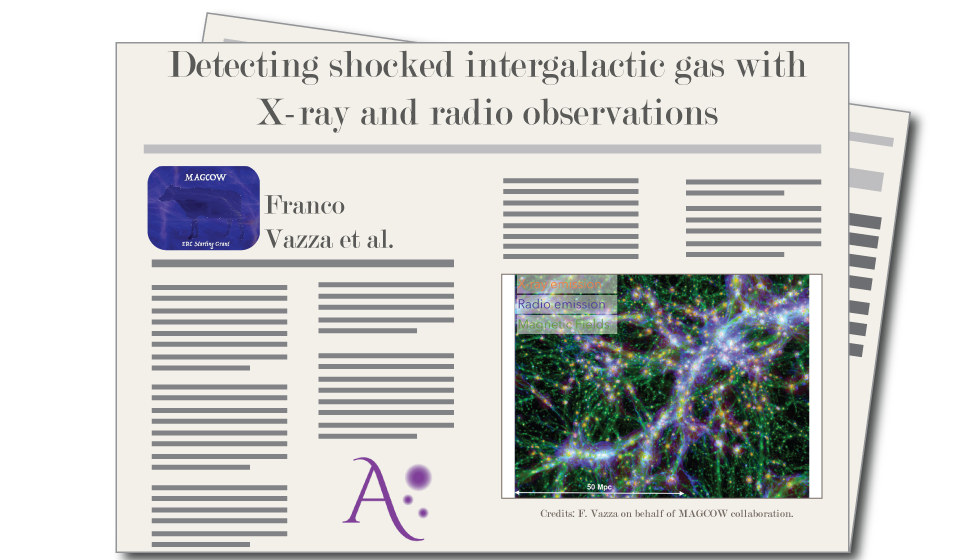
Detecting shocked intergalactic gas ...

By Franco Vazza
In "Detecting shocked intergalactic gas with X-ray and radio observations” (A&A, 2019) we produced some of the largest simulations ever produced of the cosmic web and of cosmic magnetic fields (obtained with the ENZO grid code) in order to study whether the combination of future X-ray and radio observations can lead us to a systematic imaging of the rarefied plasmas in between cluster of galaxies. Detecting this tenuous gas would be fundamental to know the evolutionary history of metals in the Universe (Athena Nuggets #26 and #30) as well as the origin of extragalactic magnetic fields, which is still unknown. Our research suggests that the combination of deep radio observations (with the Square Kilometer Array, but also with its precursors, like LOFAR and MWA) with very deep exposures with Athena should allow us to study in detail the properties of gas motions and magnetic fields with unprecedented details, in regions so far unexplored with current instruments.
In particular, our study leads to the conclusion that gas “bridges” found in the middle of cluster of galaxies ongoing collision should be a privileged target for long integration with Athena’s XIFU. Using simulated analysis with the SIXTE simulator, we verified that with a few 100s of kilosecond of integration there, a XIFU observation will allow astronomers to study the properties of shock waves and chaotic gas flows for the first time outside of galaxy clusters, probing into the cosmic web. This work has been supported by the Starting Grant “MAGCOW” from the European Research Council.

